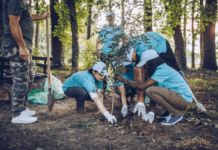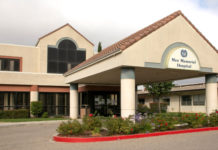KING CITY — Jeremiah Casey arrived in San Lucas, Calif., in 1861 as a young Irish immigrant. He started homesteading and ranching, raising beef, finishing them on grass and marketing them as best he could, given the limited resources at hand.
Back then, ranchers didn’t have access to modern transportation or refrigeration, so food stayed mostly in the region where it was raised.
“With this whole Farm to Table and local food sourcing movement, it’s interesting how things have come full circle, right back to where Jeremiah started,” said Rich Casey, Jeremiah’s great-great grandson. “Given how progressive and smart he must have been, I’m guessing he would have been pretty handy on a computer, marketing his beef online.”
Rich, a fifth-generation Monterey County cattleman, and his wife Sharon have recently begun producing and marketing locally grown, all natural, grass-fed beef at Casey Redtail Ranch. Health conscious consumers are asking for lean, locally sourced protein, Rich said, and the Caseys are anxious to provide it.
“We love the cattle, the land and the lifestyle, but it’s really difficult to turn a profit in the cattle business, especially for small scale operators,” he said. “Now, with this demand for natural, grass fed beef, locally raised (and) coupled with consumer’s willingness to buy online, we have both the product and the marketing channel to sell our premium beef, and if everything goes right, make a small profit.”

The Caseys raise their cattle in the foothills of southern Monterey County. The moderate climate, long growing season and excellent soils make for strong forage and healthy beef.
“It all works well as long as we get some rain,” Rich said. He went on to explain that dry years can be challenging, and coupled with all the complexities of running a small food business (I.T., sales, customer service, harvest, transportation, cutting, wrapping, packaging, storage and delivery) it is not an easy business.
“That said, when I get to spend the day on the ranch horseback, handling the cattle, or I see them eagerly feeding on tall green grass, or I get a great comment from a customer about how delicious our beef is, it makes it all worth it,” he said.
Casey highlighted the importance of taking care of the land so it can remain “useable for future generations.”
“Words like sustainable, holistic, stewardship, regenerative, rotational, managed intensive grazing… we can go into great detail on each concept, but essentially it’s about moving cattle across the landscape in a way to avoid overgrazing, retain as much moisture as possible and convert the grass into healthy, lean meat,” he said. “In short, our goal is to utilize, wherever possible, grazing methods that allow for the overall health of the animal and improvement of soil and forage.”
Often this means short duration, high density grazing plans that allow for maximum rest and recovery of the plants and soil, and that will better utilize and retain available moisture and promote healthy regrowth. This is not only a win for the cattle and the land, but also for the wildlife, Casey added.
The Caseys recently completed their website, caseyredtailranch.com and are taking orders to deliver all-natural, grass finished beef in the late fall.
While it is certainly a different style of sales and marketing of beef than what old Jeremiah Casey would have used, the raising and finishing on grass has certainly come full circle.










